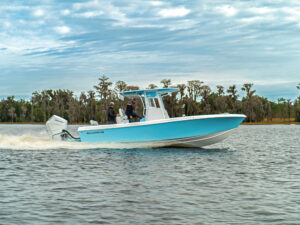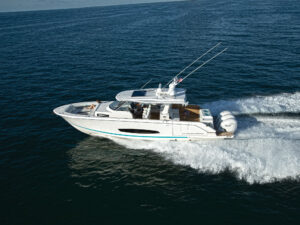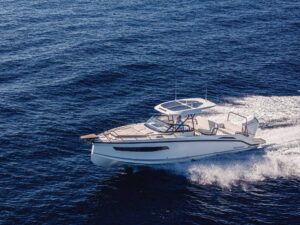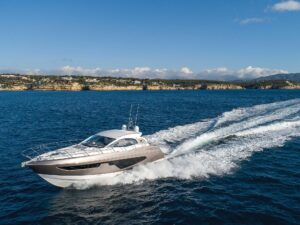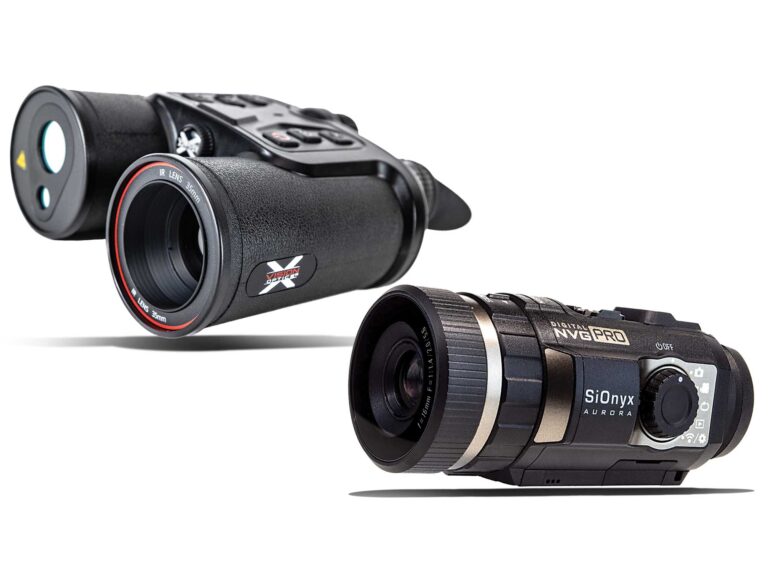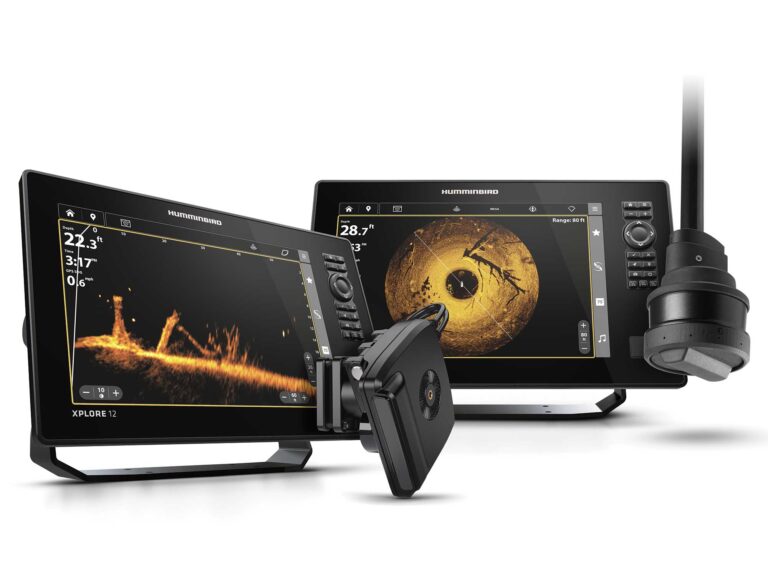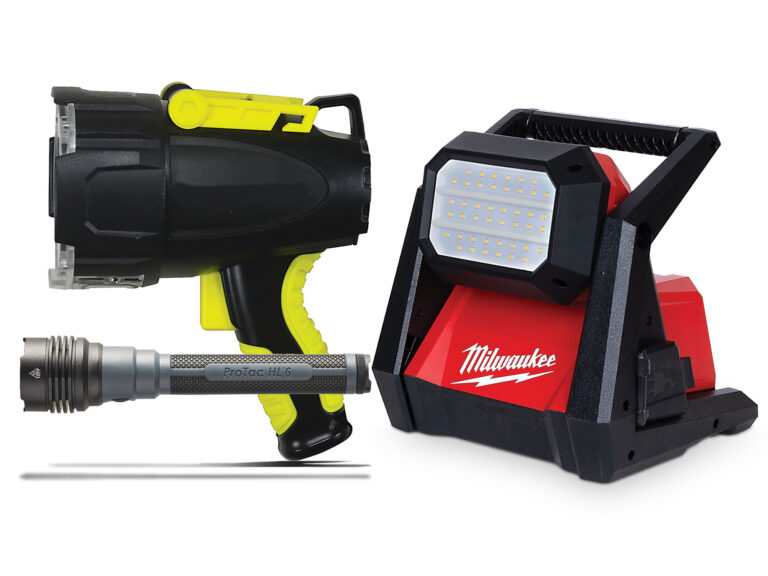Of all the boats vying for your hard-earned cash, entry-level bowriders have the toughest assignment. After all, these boats must accommodate a family-size crew, offer cavernous stowage, come with pulling power for all types of water toys, feature reliable power, measure around 18′, and do it all at a bargain-basement price. Is it possible? Yes, but it’s not easy. To find out which boat does it best, we tested five of the top contenders: Bayliner 175 Capri, Glastron SX 175, Rinker 180, Stingray 180LS, and Nitro 175 Sport built by Tracker. Offering lots of family-friendly features, which each does, is, of course, the easy part. The hard part is delivering the complete package for-drumroll please-our target price of $14,000 or less. We poked around their stringers and frames, analyzed their passenger layouts, and put them through their paces in an effort to see how they measure up dollar for dollar. Looking for the best bowrider bargain on the market? Read on.
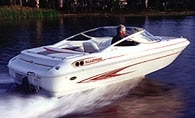
Glastron SX 175
Nuts and Bolts
Boats in the entry-level market use either plywood or fiberglass in three critical areas: stringers and frames, transom, and cockpit sole. Although both materials have their staunch supporters, rot-resistant plywood should prove just as durable as the more expensive fiberglass if it is installed properly. Both Bayliner and Stingray use a wood grid encapsulated in fiberglass. Nitro, Rinker, and Glastron have a fiberglass grid system. Glastron and Nitro also feature a composite material in their transoms; Rinker, Bayliner, and Stingray opt for wood.
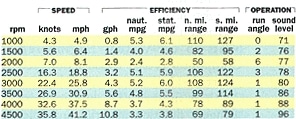
Glastron SX 175 Specs
For boaters, the greatest difference will be seen in the cockpit sole, where marine plywood is covered with glued-on carpet. Carpeting is soft and looks nice, but it traps dirt and moisture. It also shows its age faster than fiberglass. Only Glastron has a standard fiberglass cockpit sole; Stingray offers a full fiberglass liner as an upgrade ($762).
Glastron’s SX 175 is one of the first boats to use Virtual Engineered Composites (VEC) construction. A finished VEC hull includes stringers, flotation material, and sole, all molded into one solid unit. This construction technique also produces a smoothly finished engine compartment, ski locker, and stowage areas. You won’t find any rough fiberglass. The VEC hull features a rare lifetime, limited, structural hull warranty. In terms of warranties, Bayliner recently followed suit, offering a similar warranty on its Capri line. A five-year warranty is the industry standard.
As stated, the use of rot-resistant plywood is typical of many entry-level boats, but Bayliner uses slightly more of it than the others. Both the seat bases and ski locker hatch have exposed wood. This may work, but we’d rather see a composite, as these areas are vulnerable to moisture. Stingray, Glastron, Rinker, and Nitro all feature seat bases made from either a composite or roto-molded plastic. The Bayliner 175 Capri’s stowage areas reveal the hull’s raw fiberglass interior. It looks less finished but eliminates the dampness and dirt you get when the locker is lined with carpet.
Cleats are often overlooked-until the first time you tie up and the wind and current are against you. All five manufacturers chose high-quality material and adequate size. Both Bayliner and Rinker have three cleats total but give you only one bow cleat. Nitro offers two cleats-one on each gunwale perched amidships. Glastron incorporates four that are well placed, with the two forward ones able to be used for bow-or spring lines. Only Stingray comes close to our preferred six-cleat layout with five: a pair at the stern, a pair amidships, and one at the bow.
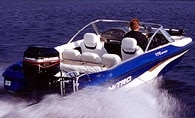
Nitro 175
Elbow Room
With a scant 18′ or less to accommodate up to seven people, layout is one of the most important considerations in this class, particularly when it comes to the bow cockpit. Some manufacturers tackle the issue head on, carrying the beam as far forward as possible to keep things roomy. Others surrender the battle of the bulge in favor of a sleekly tapered bow. This compromise results in a forward cockpit suitable only for kids.
Both Glastron and Bayliner stand head and shoulders above the pack for their expansive bow areas. The Glastron SX 175’s seats maintain a minimum of 1’6″ in depth throughout the cockpit, and their 4′ length lets occupants stretch out. The Bayliner 175 Capri betters Glastron by 2″ in depth and offers 3’6″ of length. The Rinker 180’s bow seats max out at 1’3″ in depth, tapering to only 2″ over their 2’10” length. The Stingray 180LS also has less space. Its bow seats taper from 1’4″ to 6″ over a 3’2″ span. The Nitro 175 Sport is the exception to the traditional bowrider layout, offering a raised casting deck with two removable bow seat pads. A foot-controlled trolling motor comes standard.
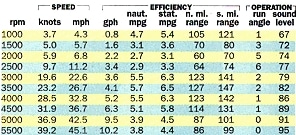
Nitro 175 Specs
Once in the main cockpit, there are two basic layouts. Rinker and Bayliner both chose the traditional back-to-back foldout lounge seats, complemented by hi-lo aft jump seats bordering the engine box. Bayliner’s seats, however, only adjust fore and aft. Stingray opts for a swivel bucket seat for the captain, a back-to-back port lounge, and hi-lo aft jump seats. That helm seat felt too high, however, resulting in the windshield frame falling in our line of vision. Taller captains will be exposed to the wind. The throttle is also placed relatively low on the inwale.
The Glastron SX 175 had optional sport seating ($250), which featured an aft bench with sunpad and two comfortable buckets forward. The Nitro 175 Sport took a unique route, choosing buckets for captain and copilot, then a row of three removable buckets sitting bench-like across the stern, followed by a rear deck area that houses a large, aerated livewell.
Standouts? The Rinker 180 features an exceptionally deep cockpit, which provides more security for a family with little ones, but makes it less easy to climb in and out. Unfortunately there’s no nonslip on the gunwales.
All five boats offer decent engine access. Bayliner, Rinker, and Stingray have a removable motorbox, Glastron a lifting sunpad, and Nitro an outboard. Rinker’s engine cover is heavier than average, whereas Bayliner’s is refreshingly light. Stingray’s cover requires more fiddling to get it into place than we liked.
For ski lockers, Stingray, Rinker, Glastron, and Bayliner all feature a minimum of 6′ in length and average at least 2′ in width. Not bad, especially considering today’s towables, which will most likely be fat wakeboards. Nitro is the exception, offering only 11″ in width but extending nearly the entire length of the boat. All the lockers are fairly shallow, with less than 1′ being the norm. Stingray’s 6″ depth is the shallowest.
Rinker and Bayliner are the only manufacturers in this group to offer three-step boarding ladders. Nitro, Stingray, and Glastron use only two. Of course, the lack of a third step makes boarding more difficult.
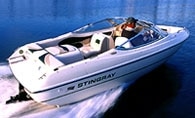
Stingray 180LS
Need for Speed
While you can’t expect go-fast performance at these prices, the speeds we saw were all pretty impressive. Almost every boat was powered by the smallest engine option available. The I/Os were 135-hp models from Mer-Cruiser or Volvo Penta; Nitro chose a 90-hp Mercury outboard.
The Stingray 180LS, Bayliner 175 Capri, and Nitro 175 Sport all topped the 45-mph mark; the Glastron SX 175 and Rinker 180 averaged around 41 mph. Pulling power has undergone a vast improvement over the years – every boat could pull a 150-pound wakeboarder from a deep-water start with relative ease.
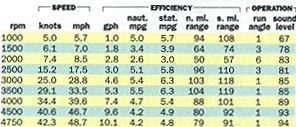
Stingray 180LS Specs
The Stingray 180LS was the speed king, wringing out an impressive 48.7 mph. It has a notched transom, an idea taken from offshore racers, which allows the drive to be mounted higher, thereby reducing drag. This boat also liked a lot of trim, which made it feel a bit loose on the water. It came with a 23″-pitch, stainless-steel Mercury Laser II propeller ($389). Our experience shows that this prop can be worth at least an extra mile an hour to the top end.
The Bayliner 175 Capri finished with a respectable 45.9-mph top end, using a 21″-pitch aluminum prop. The boat’s time to plane was slightly slower than most of the competition, typically finishing around 0.5 seconds above the four-second mark. It also peaked at 5000 rpm, about 200 rpm above MerCruiser’s suggested 4400-to-4800-rpm safe maximum power range. A higher-pitched prop would have brought the engine back into range, boosting top speed, but slowing time to plane.
The only outboard in the group, the 90-hp Mercury-equipped Nitro 175 Sport, finished in the 45-mph range and planed in just under three-and-a-half seconds. Nitro replaced the 23″-pitch aluminum prop with a 22″-pitch stainless-steel model, about a $300 upgrade.
The only outboard in the group, the 90-hp Mercury-equipped Nitro 175 Sport, finished in the 45-mph range and planed in just under three-and-a-half seconds. Nitro replaced the 23″-pitch aluminum prop with a 22″-pitch stainless-steel model, about a $300 upgrade.
The Glastron SX 175 had the lone Volvo Penta, the 3.0L GS with a 19″ aluminum prop. Top speed reached 41.2 mph, but the boat posted the fastest time to plane, just over three seconds. This may be attributed to its 1,980 pounds, the lightest of the group.
The Rinker 180’s top speed was 40.6 mph, and it took nearly five seconds to get on plane. It also pushed outside MerCruiser’s suggested operating range, peaking just shy of 5000 rpm with a 19″-pitch prop.
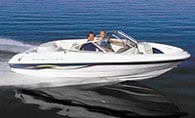
Bayliner 175 Capri
Turn ‘n Burn
The Bayliner 175 Capri had the best overall handling, exhibiting excellent top-end stability, holding its line through the corners, and suffering little when forced to contend with chop. That’s a good combo for first-time boaters. A minor problem was found in hard starboard turns at high speeds – the engine occasionally felt starved for fuel, something we also noticed on the MerCruiser-equipped Stingray 180LS and Rinker 180. Mer-Cruiser says the reason is pure physics: The 3.0L has a sideways-mounted carb, and hard right turns cause the fuel to uncover the jets. Of course, most owners will never drive these boats as aggressively as we do during our tests.
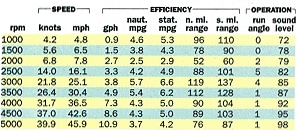
Bayliner 175 Capri Specs
The Stingray 180LS and Glastron SX 175 featured similar cornering abilities to those of the Bayliner 175 Capri. Stingray’s hull eschews conventional protruding strakes in favor of horizontal Z-planes – flat channels cut into the hull. Our experience? Stingrays tend to be fast, although when pushed hard, both the Stingray and the Glastron occasionally felt light and not in touch with the water. The likely cause is that these hulls have a lot of lift. The truth is, some people find this fun; others don’t. The Glastron boasts an impressive agility through hard corners. It also smoothed out the wind-blown chop on our test site with relative ease.
Being longer and wider and having a deeper cockpit, the Rinker looks bigger than the rest, so we thought it would have the smoothest ride. It cornered admirably but showed the most bowrise during acceleration, and its ride wasn’t as soft as we had hoped. On the plus side, it was the lone model to come with power-assist steering, so you won’t have to muscle it around. Glastron’s and Stingray’s power-assist is optional.
Finally, the Nitro 175 Sport handled like a bassboat. Turns were smooth, and it manuevered our wind-blown lake with a relatively calm ride.
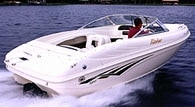
Rinker 180
Bang for the Buck
Don’t base your decision only on lowest price; value is a better standard. So what makes a good value? The Bayliner 175 Capri offers solid performance, a lifetime hull warranty, and a roomy interior. A 12-volt accessory outlet is a nice extra, as is the JVC stereo. A negative, however, is its omission of a trim gauge. Experienced skippers may adjust trim by engine rpm or feel, but entry-level buyers aren’t nearly as well versed. We also consider a trim indicator a must for launching and loading at the ramp. The Bayliner’s helm seat is also the only model with just two positions. Still, the boat does most things quite well, and the entire package – boat, motor, and trailer – comes in at $13,795.
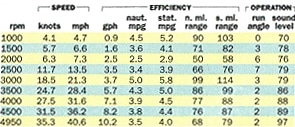
Rinker 180 Specs
The Stingray 180LS includes several nice extras – an hourmeter, 12-volt outlet, convertible top, and cockpit lighting are all standard. Power and tilt steering, two seating layouts, and a full fiberglass liner are appealing options. Then there’s its speed. Stingray boasts a mark near 50 mph while using an economical 3.0-liter engine; the others may leave you performance hungry after the first season. The bow cockpit isn’t very big, however, and that light feel at high speed could unnerve some novices. Stingray’s pricing is both a low and a high point. At $13,550 without a trailer, it’s on the upper end of the market. But the company periodically runs advertised specials on the boat/motor package (try the fall and boat show seasons) for $10,995. Add $1,300 or so for a decent trailer, and it’s still a bargain.
The Glastron 175 SX’s greatest value may be its lifetime hull warranty and all-fiberglass VEC construction. Saltwater boaters especially will appreciate the ability to simply hose down the cockpit at day’s end. It also features the roomiest bow cockpit in the class, the option of a tilt wheel, and a choice of two colors. Although the boat displays the quickest acceleration time, its 41.2-mph top-end speed tested at the low end of this group’s range. Its price, though, is impressive: $13,983 for boat, motor, and trailer. The company also advertises specials down to $10,988.
The Nitro 175 Sport offers a well-rounded package that finished right on target – $13,995, including a removable trolling motor, depthfinder, and trailer. It plays both skier and fisher, but its fishing side wins out.
Overall, the Rinker 180 is another good deal. It features fiberglass stringers, power-assisted steering, a choice of hull color, and a convertible top. A deep cockpit offers security, but it can be a challenge at the dock. The boat’s performance numbers, ride, and bow space were a bit off the pace of the frontrunners. Its price is a $12,995 – add another $1,300 if you want a trailer.
Obviously, no boat, particularly in this size and price range, can be perfect. Tradeoffs are a given, and manufacturers have placed their greatest value in different areas. As we discovered with our tests, each of these boats has strengths and weaknesses.That said, it’s worth noting that a lot of boat, motor, and trailer can be had for a reasonable price. In other words, you won’t go wrong with any of these boats. The ultimate choice boils down to which offers the best features for you, your family, and your boating environment. In the end, though, we give the nod to the Bayliner 175 Capri for its ability to combine a spacious layout, confident ride, limited lifetime hull warranty, and with solid performance numbers in a package with an extremely competitive $13,795 retail price. We just have one favor to ask: Put a trim gauge on that baby, okay?

